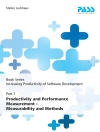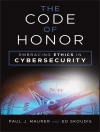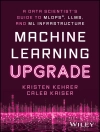HANDBOOK ON INTERACTIVE STORYTELLING
Discover the latest research on crafting compelling narratives in interactive entertainment
Electronic games are no longer considered “mere fluff” alongside the “real” forms of entertainment, like film, music, and television. Instead, many games have evolved into an art form in their own right, including carefully constructed stories and engaging narratives enjoyed by millions of people around the world.
In Handbook on Interactive Storytelling, readers will find a comprehensive discussion of the latest research covering the creation of interactive narratives that allow users to experience a dramatically compelling story that responds directly to their actions and choices.
Systematically organized, with extensive bibliographies and academic exercises included in each chapter, the book offers readers new perspectives on existing research and fresh avenues ripe for further study. In-depth case studies explore the challenges involved in crafting a narrative that comprises one of the main features of the gaming experience, regardless of the technical aspects of a game’s production.
Readers will also enjoy:
- A thorough introduction to interactive storytelling, including discussions of narrative, plot, story, interaction, and a history of the phenomenon, from improvisational theory to role-playing games
- A rigorous discussion of the background of storytelling, from Aristotle’s Poetics to Joseph Campbell and the hero’s journey
- Compelling explorations of different perspectives in the interactive storytelling space, including different platforms, designers, and interactors, as well as an explanation of storyworlds
Perfect for game designers, developers, game and narrative researchers, academics, undergraduate and graduate students studying storytelling, game design, gamification, and multimedia systems, Handbook on Interactive Storytelling is an indispensable resource for anyone interested in the deployment of compelling narratives in an interactive context.
Jadual kandungan
List of Figures ix
List of Tables xiii
Preface xv
Acknowledgements xvii
1 Introduction 1
1.1 Interactive Storytelling 3
1.1.1 Partakers 5
1.1.2 Narrative, Plot, and Story 6
1.1.3 Interaction 8
1.2 History of Interactive Storytelling 10
1.2.1 Theatre 11
1.2.2 Multicursal Literature 12
1.3 Role-playing Games 13
1.3.1 Hypertext Fiction 14
1.3.2 Webisodics 14
1.3.3 Interactive Cinema 15
1.3.4 Television 17
1.3.5 Games 17
1.3.5.1 Interactive Fiction 18
1.3.5.2 Digital Games 19
1.4 Summary 21
Exercises 22
2 Background 25
2.1 Analysis of Storytelling 25
2.1.1 Aristotle’s Poetics 25
2.1.1.1 Elements of Tragedy 26
2.1.1.2 Narrative Forms 27
2.1.1.3 Dramatic Arc 27
2.1.2 Visual Storytelling 29
2.1.2.1 Semiotics 30
2.1.2.2 Work of Art 31
2.1.2.3 Video Games as Visual Art 31
2.1.3 Structuralism 33
2.1.3.1 Propp’s Morphology of Russian Folktales 33
2.1.3.2 Colby’s Grammar of Alaska Natives’ Folktales 35
2.1.3.3 Story Grammars 37
2.1.4 Joseph Campbell and the Hero’s Journey 41
2.1.5 Kernels and Satellites 42
2.2 Research on Interactive Storytelling 44
2.2.1 Brenda Laurel and Interactive Drama 46
2.2.2 Janet Murray and the Cyberbard 47
2.2.3 Models for Interactive Storytelling 48
2.2.4 Narrative Paradox and Other Research Challenges 49
2.2.4.1 Platform 52
2.2.4.2 Designer 52
2.2.4.3 Interactors 53
2.2.4.4 Storyworld 53
2.2.4.5 Terminology 53
2.3 Summary 54
Exercises 54
3 Platform 57
3.1 Software Development 58
3.1.1 Model-View-Controller 59
3.1.2 Interactor’s Interface 61
3.1.3 Designer’s Interface 63
3.1.4 Modding 63
3.2 Solving the Narrative Paradox 65
3.2.1 Author-centric Approach 66
3.2.2 Character-centric Approach 68
3.2.3 Hybrid Approach 69
3.3 Implementations 71
3.3.1 Pioneering Storytelling Systems 71
3.3.2 Crawford’s IDS Systems 73
3.3.3 Stern’s and Mateas’s Façade 74
3.3.4 Experimental Systems 75
3.3.5 Other Systems 76
3.4 Summary 77
Exercises 78
4 Designer 81
4.1 Storyworld Types 82
4.1.1 Linear Storyworlds 83
4.1.2 Branching Storyworlds 84
4.1.3 Open Storyworlds 87
4.2 Design Process and Tools 89
4.2.1 Concepting the Storyworld 90
4.2.1.1 Character Design 92
4.2.1.2 Plot Composition 93
4.2.1.3 Adapting Material from Other Media 94
4.2.1.4 Transmedia Design 95
4.2.1.5 Adams’ Template for Requirements Specifications 96
4.2.2 Iterative Design Process 97
4.2.3 Evaluating Interactive Stories 98
4.3 Relationship with the Interactor 100
4.3.1 Focalization 100
4.3.2 Story as Message 101
4.4 Summary 103
Exercises 103
5 Interactor 107
5.1 Experiencing an Interactive Story 108
5.1.1 Onboarding — From Amnesia to Awareness 109
5.1.2 Supporting the Journey 110
5.1.3 Is There an End? 111
5.1.4 Re-experiencing an Interactive Story 112
5.2 Agency 113
5.2.1 Theoretical and Perceived Agency 114
5.2.2 Local and Global Agency 115
5.2.3 Invisible Agency 115
5.2.4 Limited Agency and No Agency 116
5.2.5 Illusion of Agency 116
5.3 Immersion 117
5.3.1 Immersion Types 117
5.3.2 Models for Immersion 118
5.3.3 Flow 119
5.4 Transformation 120
5.5 Interactor Types 121
5.5.1 Top-down Analysis 122
5.5.2 Bottom-up Analysis 124
5.5.3 Discussion 125
5.6 Summary 126
Exercises 126
6 Storyworld 131
6.1 Characters 132
6.1.1 Perception 133
6.1.2 Memory 133
6.1.3 Personality 135
6.1.4 Decision-making 138
6.2 Elemental Building Blocks 141
6.2.1 Props 141
6.2.1.1 Schrödinger’s Gun 142
6.2.1.2 Internal Economy 143
6.2.2 Scenes 144
6.2.3 Events 144
6.3 Representation 145
6.3.1 Visual 147
6.3.2 Audio 148
6.3.2.1 Diegetic 148
6.3.2.2 Non-diegetic 149
6.4 Summary 150
Exercises 151
7 Perspectives 153
7.1 Multiple Interactors 153
7.1.1 Multiple Focus 153
7.1.2 Persistence 154
7.2 Extended Reality 155
7.2.1 Visual Considerations 155
7.2.2 Developing a Language of Expression 157
7.3 Streaming Media 157
7.3.1 Problems 157
7.3.2 Solution Proposals 159
7.4 Other Technological Prospects 160
7.4.1 Voice Recognition 160
7.4.2 Locating 160
7.4.3 Artificial Intelligence 161
7.5 Ethical Considerations 162
7.5.1 Platform 163
7.5.2 Designer 163
7.5.3 Interactor 164
7.5.4 Storyworld 164
7.6 Summary 165
Exercises 165
Bibliography 169
Ludography 187
Index 191
Mengenai Pengarang
Jouni Smed, Ph D, holds his doctorate in Computer Science. He has twenty years of experience in the game development, from algorithms and networking in multiplayer games to game software construction, design, and interactive storytelling.
Tomi ‘BGT’ Suovuo focuses on the virtual barrier in mediated interaction, particularly between multiple users. He has taught Principles of Interaction Design for four years.
Natasha Skult is an active member of the Finnish and international game developers community as the Chairperson of IGDA and founder of Hive – Turku Game Hub.
Petter Skult, Ph D, obtained his doctorate in 2019 in English language and literature from Åbo Akademi University. He is a game designer and writer.












